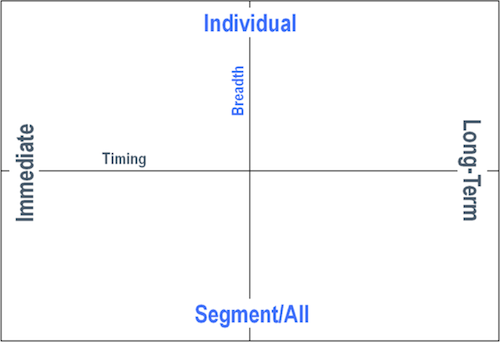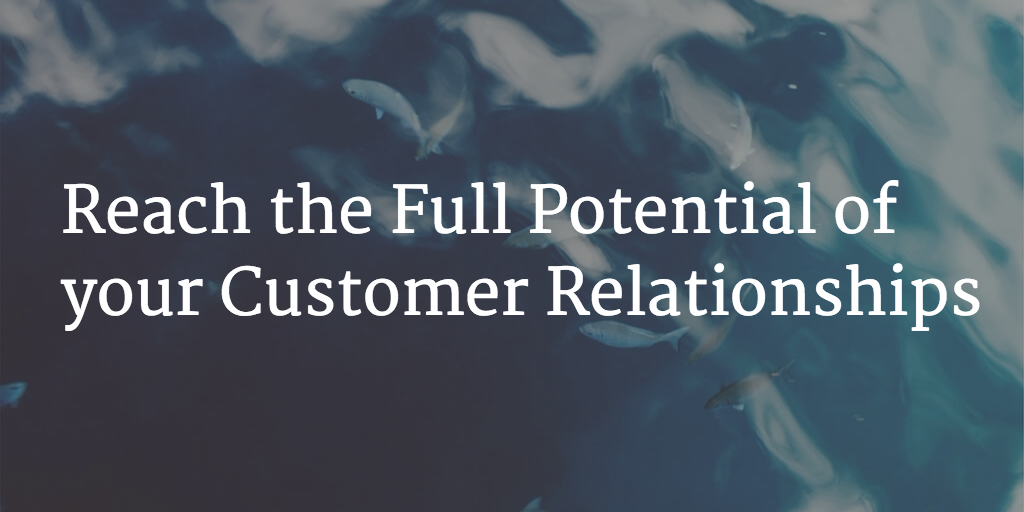One of the realities of Customer Success that is certainly recognized by practitioners – but may be missed by most of the rest of the organization – is that it actually contains all the other customer-facing functions within it (a topic touched on previously).
A complete Customer Success operation would ideally contain elements of Strategy, Business Intelligence, Marketing, Sales, Support, and Product/Service development and delivery.
The bad news about that reality is that it makes the job of a Customer Success leader and practitioner incredibly difficult. The good news of that reality is that Customer Success “contains multitudes,” to quote Walt Whitman, and it therefore provides plenty of room for Dan Steinman and I both to write about “Understanding and Engaging with Your Customers” without fear of redundancy (or, contrary to the rest of the Whitman quote, contradiction).
Dan’s article serves as an extremely practical how-to guide for organizing the activities of an individual and a team of Customer Success Managers (CSMs.) Its focus is on the Sales and Support aspects of the function. As a dyed-in-the-wool marketer, I have a different perspective on the approach to and implications of understanding and engaging customers.
An enormous amount of customers’ attitudes towards their SaaS vendor is defined by the application and by one-on-one interactions with CSM, and those attitudes are the foundation of decisions to renew, expand, and/or advocate. But the application and personal interactions with the CSM need not — and should not– be the only way a vendor delivers value and shapes customer attitudes.
This article will focus on the other– or at least another — key input: customer communications.
Get to Know Your Segments
For me, segmentation serves as an important foundation and a pragmatic approach to segmentation is:
- Use “standard” characteristics (e.g., industries, company size) to segment the customer base–in other words, divide the base into, for example, size tiers and industries
- Analyze customer data to see if the different size tiers or industries are marked by significant behavioral differences (e.g., longer adoption times, different objectives)
Once you identify a segmentation scheme that reflects true customer differences, those segments should be the focus of your efforts to gain understanding and drive engagement. You’ve named them, but you need to describe who they are and what makes them tick… and tick differently than each other. Certainly, armed with sales and account management history, you have a great knowledge of each individual customer, but to build scale and effectiveness in a customer engagement program you have to develop a segment-level strategy.
The key to building a segment-level understanding is the exercise of creating a segment profiles. A segment profile describes each of your segments according to key characteristics such as:
- Decision making process and structure
- Application feature usage
- Success metrics
- Onboarding timing and milestones
- Key challenges
- Content interests
- Communication preferences
Not all of these (or any of the multitude of other potential characteristics) will be relevant for every segment. You’re looking for those that define the segment–that reveal distinctions between segments.
The inputs to these profiles should be everything you can get your hands on that illuminate these distinctive segment qualities. Obviously, your CRM and CSM systems will contain a wealth of valuable data that should be a great starting point. That can be supplemented by anecdotal information from customer-facing personnel, segment responses to communications sent to them, and segment research—either qualitative (one-on-one customer interviews, segment-specific website content) or quantitative (segment customer survey).
While this profile is your guide to each of the segments and aims to capture your full understanding of that segment, creating a “complete” profile shouldn’t be your goal or an obstacle to developing an engagement strategy. In fact, you can–and should–be updating the profiles on an ongoing basis as things change and new pieces of insight are acquired.
Build a Communication Strategy
Once you have built segment profiles, they should serve as the foundation of the communication and nurturing component of your engagement strategy. To be effective, a segment-based communications strategy needs to leverage your understanding of segment customers in order to:
- Be relevant to the segment customers. If what you’re communicating isn’t relevant, your customers won’t listen. Even worse, if it isn’t relevant your customers will think you don’t know them or understand them.
- Positively influence segment customer behavior or attitudes. The goal of any non-administrative communication from a vendor to a customer or prospect has to be to influence behavior. If you’re not influencing them to do something that will deliver revenue or profit, what’s the point?
Relevance can be based on role, customer segment characteristics, and/or lifecycle stages. Some understanding of relevance based on these attributes will come through your segment profiles (e.g., integrating customer key concerns and business challenges) and through intuition (e.g., building an onboarding program for new subscribers). Ultimately, the best gauge of relevance will be customer feedback, either in the form of their responses to previous communications, or in the form of primary research.
Influencing behavior and/or attitudes requires that you first define what the desired behavior and attitudes are. Without that step, it’s like driving without a map but without picking your destination. You can think about what and how you want to influence in a systematic way by thinking in terms of two variables: the time horizon of influence (do you want customers to take action immediately or do you want to influence long-term behavior and attitudes) and the breadth of influence (do you want to target individual customers or the entire customer base).
Visualized, the matrix looks something like this:

Armed with this matrix, you can systematically work your way through each of the four quadrants to think about what your opportunities are and how to prioritize those opportunities based on CLV impact. For example, if one of your segments is small businesses (SMBs), your best opportunity to deliver value and increase Customer Lifetime Value (CLV) might be to develop an e-newsletter program to deliver value-added content to your customers as a way to build loyalty and drive retention and word-of-mouth marketing.
On the other hand, if you struggle with driving adoption in your enterprise segment, you might need to focus on the Individual/Immediate quadrant and build an email campaign aimed at driving training attendance and hitting onboarding milestones. Building a communication strategy on these twin pillars of knowledge-based relevance and influence-driving will ensure that your customer engagement will be both effective and efficient.
Most importantly, developing a strategic approach to understanding your customers and then engaging with them through CSMs but also through email and other non-human channels enables you to reach the full potential of your customer relationships.
